Philae completes it primary mission before hibernation
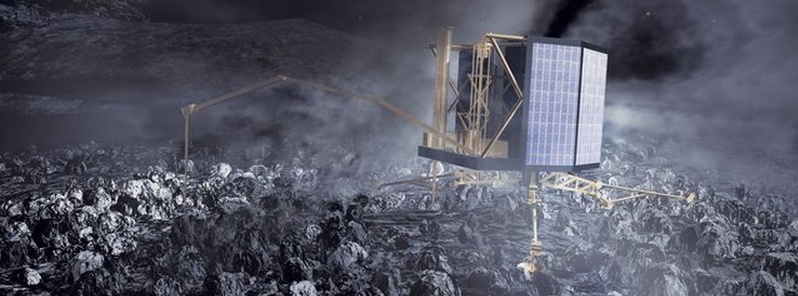
Rosetta's lander Philae has completed its primary science mission after nearly 57 hours on Comet 67P/Churyumov–Gerasimenko, ESA proudly announced today. With its batteries now depleted and without enough sunlight available to recharge, Philae has fallen into hibernation mode – for a potentially long silence. In this "idle mode", all instruments and most systems on board are shut down.
“Despite the unplanned series of three touchdowns, all of our instruments could be operated and now it’s time to see what we’ve got,” DLR's Stephan Ulamec, Lander Manager, said. "Prior to falling silent, the lander was able to transmit all science data gathered during the First Science Sequence," Ulamec added. "This machine performed magnificently under tough conditions, and we can be fully proud of the incredible scientific success Philae has delivered."
After being out of communication visibility with the lander since 09:58 UTC on Friday, November 14, Rosetta regained contact with Philae at 22:19 UTC. The signal was initially intermittent, but quickly stabilised and remained very good until 00:36 GMT on Saturday, November 15.
In that time, the lander returned all of its housekeeping data, as well as science data from the targeted instruments, including ROLIS, COSAC, Ptolemy, SD2 and CONSERT. This completed the measurements planned for the final block of experiments on the surface.
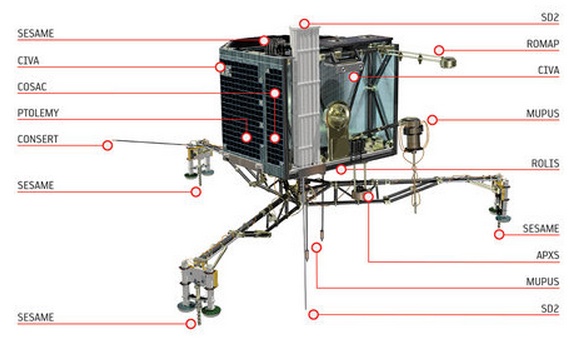
Philae's instruments. Image credit: ESA/ATG medialab (instruments explained)
In addition, the lander’s body was lifted by about 4 cm and rotated about 35° in an attempt to receive more solar energy. But as the last science data fed back to Earth, Philae’s power rapidly depleted.
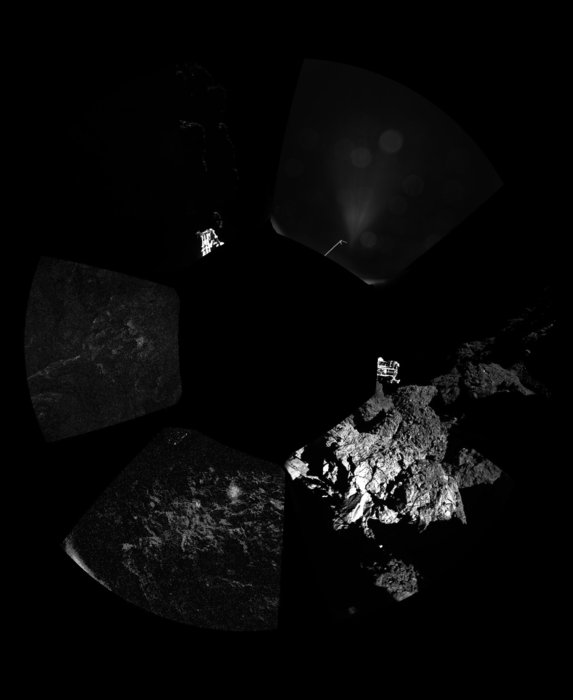
Rosetta’s lander Philae has returned the first panoramic image from the surface of a comet. The view, unprocessed, as it has been captured by the CIVA-P imaging system, shows a 360º view around the point of final touchdown. The three feet of Philae’s landing gear can be seen in some of the frames. Image credit: ESA/Rosetta/Philae/CIVA
The search for Philae’s final landing site continues, with high-resolution images from the orbiter being closely scrutinised.
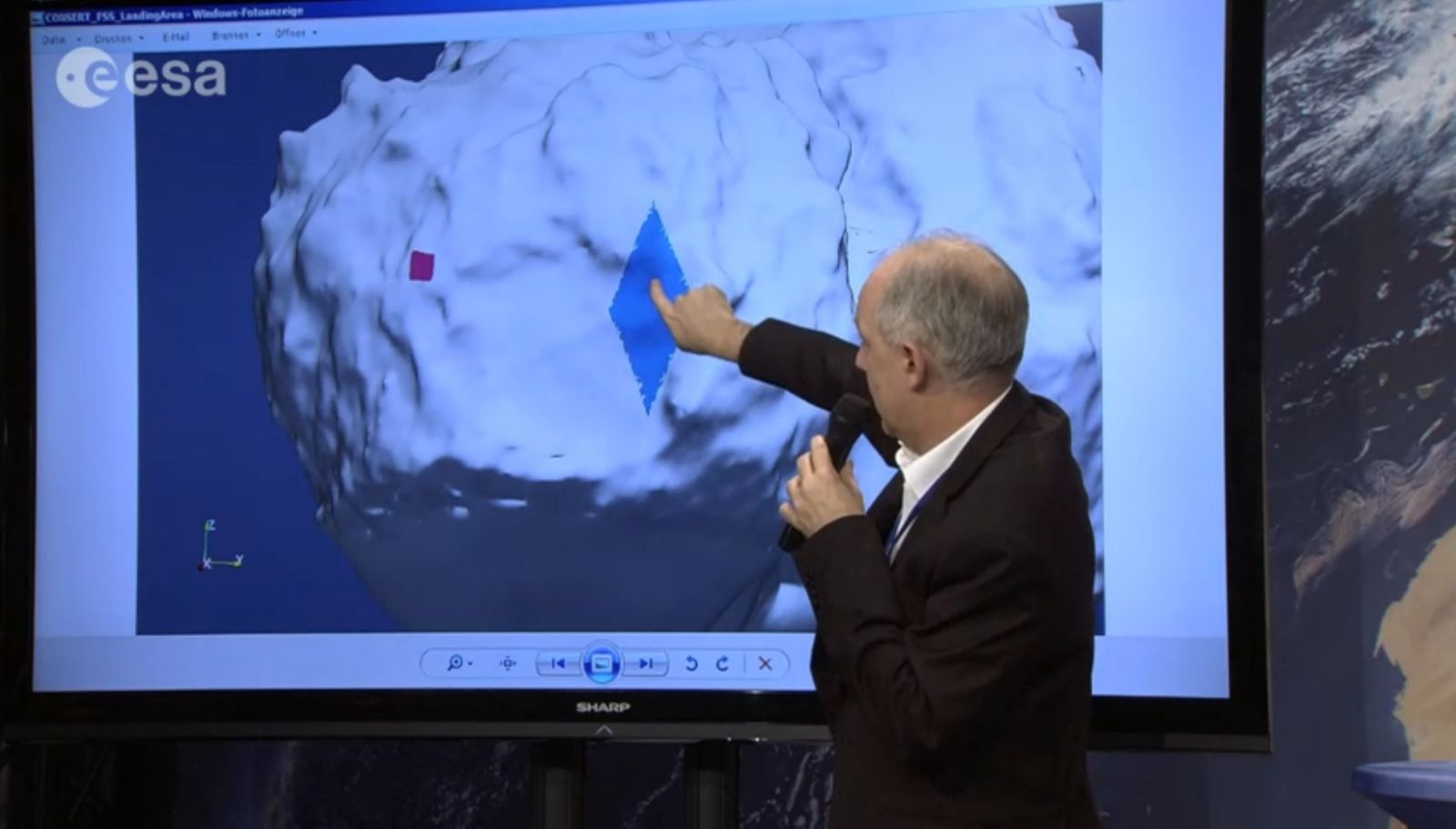
Against the odds – with no downwards thruster and with the automated harpoon system not having worked – Philae bounced twice after its first touchdown on the comet, coming to rest in the shadow of a cliff on Wednesday, November 12 at 17:32 UTC (comet time – it takes over 28 minutes for the signal to reach Earth, via Rosetta).
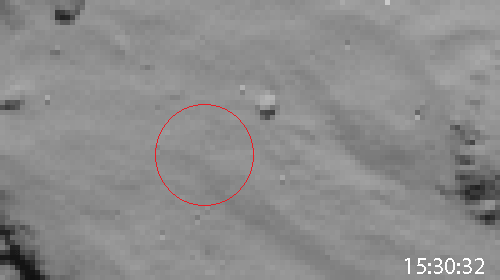
This animated image provides strong evidence that Philae touched down for the first time almost precisely where intended. The animation comprises images recorded by the navigation camera (NAVCAM) on board Rosetta as the orbiter flew over the (intended) Philae landing site on November 12. The images were taken at 15:30:32 UTC and 15:35:32 UTC onboard spacecraft time. The landing time was 15:34:06 UTC onboard the spacecraft, between the timestamps of the two images. Image credit: Credits: ESA/Rosetta/NAVCAM – CC BY-SA IGO 3.0
Meanwhile, the lander has returned unprecedented images of its surroundings.
.jpg)
First two images from the comet surface after Philae stabilized. Image credit: ESA/Rosetta/Philae/CIVA
While descent images show that the surface of the comet is covered by dust and debris ranging from millimetre to metre sizes, panoramic images show layered walls of harder-looking material. The science teams are now studying their data to see if they have sampled any of this material with Philae’s drill.
.jpg)
Image taken by Philae 40 seconds before first touchdown. Credit: ESA/Philae/ROLIS
“We still hope that at a later stage of the mission, perhaps when we are nearer to the Sun, that we might have enough solar illumination to wake up the lander and re-establish communication, ” Ulamec said.
From now on, no contact will be possible unless sufficient sunlight falls on the solar panels to generate enough power to wake it up. The possibility that this may happen later in the mission was boosted when mission controllers sent commands to rotate the lander’s main body with its fixed solar panels. This should have exposed more panel area to sunlight.
The next possible communication slot began on today at about 10:00 UTC. Rosetta orbiter will listen for a signal, and will continue doing so each time its orbit brings it into line-of-sight visibility with Philae. However, given the low recharge current coming from the solar panels at this time, it is unlikely that contact will be re-established with the lander in the near future.
Meanwhile, the Rosetta has been moving back into a 30 km orbit around the comet, ESA explained.
It will return to a 20 km orbit on December 6. 2014 and continue its mission to study the body in great detail as the comet becomes more active, en route to its closest encounter with the Sun on August 13, 2015.
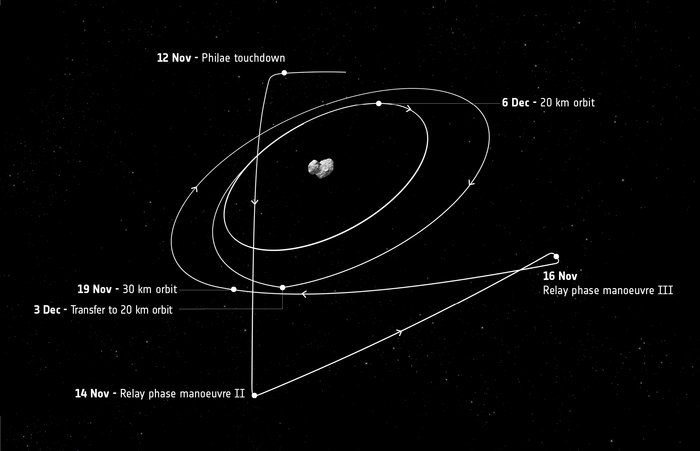
Labelled trajectory of Rosetta’s orbit, focusing on the manoeuvres after November 12. Image copyright: ESA
Over the coming months, Rosetta will start to fly in more distant ‘unbound’ orbits, while performing a series of daring flybys past the comet, some within just 8 km of its center.
Data collected by the orbiter will allow scientists to watch the short- and long-term changes that take place on the comet, helping to answer some of the biggest and most important questions regarding the history of our Solar System. How did it form and evolve? How do comets work? What role did comets play in the evolution of the planets, of water on the Earth, and perhaps even of life on our home world.
“The data collected by Philae and Rosetta is set to make this mission a game-changer in cometary science,” said Matt Taylor, ESA’s Rosetta project scientist.
“At the end of this amazing rollercoaster week, we look back on a successful first-ever soft-landing on a comet. This was a truly historic moment for ESA and its partners. We now look forward to many more months of exciting Rosetta science and possibly a return of Philae from hibernation at some point in time," Fred Jansen, ESA’s Rosetta mission manager, said.
Source: ESA
Featured image: Philae on Comet 67/P artistic representation. Image copyright: ESA / AOES Medialab.

I realize that this is hindsight,&that a lot of engineers at ESA thought likewise;if a radionuclide power source had been used,it would’ve provided long term power. But,no doubt hysterical fears&meddlesome politics prevented this…,if we’re serious about deep space exploration,we ‘ll have to face this issue.